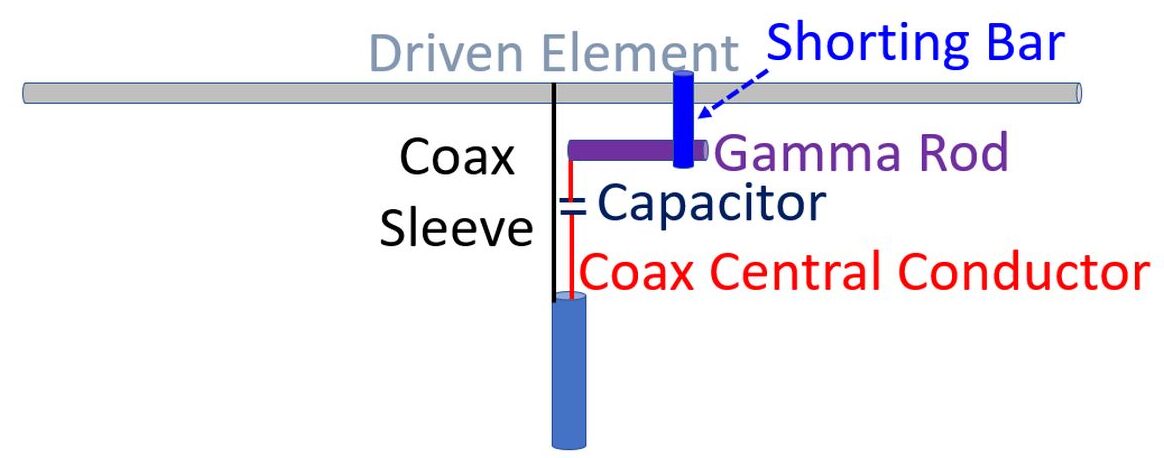What is a Gamma Match for the Antenna?
What is a Gamma Match for the Antenna?
Gamma impedance match for the antenna is also known simply as gamma match. In case of a Yagi-Uda type of antenna, it allows the driven element to be a single rod or tube without being cut at the feedpoint, giving more physical integrity to the system. As the RF voltage at the centre of a half wave antenna is zero, the outer sleeve of the coax can be connected here, which corresponds to the position on the boom as well. The central conductor of the coax is then connected beyond the centre point through a capacitor to tune out the inductance of connecting arm of antenna. The name gamma match comes from the resemblance of the shape of connection region to the Greek alphabet Gamma (Γ).

As the gamma match forms an unbalanced system, it can be connected to the coax without a balun as both the coax and the antenna are unbalanced in this case. Capacitor in the circuit is initially a variable capacitor which is replaced by a corresponding fixed value capacitor after tuning. Gamma match is often used for an HF antenna, and sometimes for a VHF antenna. When fed by a 50 Ohms unbalanced coax feeder, length of the gamma rod is about 5% of the wavelength. Its diameter is typically half that of the driven element. Spacing between the gamma rod and the driven element is about 0.7% of the wavelength. Value of the capacitor will be about 7 pF for a meter of the wavelength.